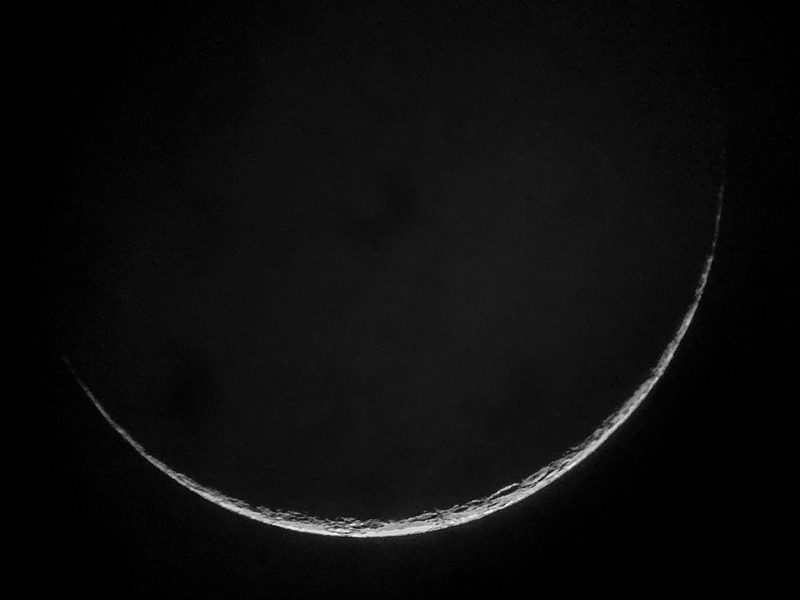iPhone Planets, Moon;
D850 DSLR Galaxies
Posted: 11 September 2018
|
Open: Monday, 10 September 2018, 1842 MST Temperature: 84°F |
Session: 1275 Conditions: Mostly clear |
Equipment Used:
12" f/8 LX600 w/StarLock
2" 24mm UWA eyepiece
2" 9mm 100° eyepiece
2" 2X Powermate
Camera:
iPhone 8 Plus
D850 DSLR
1848 MST: LX600 ON, StarLock OFF, High Precision OFF.
Viewed Venus, 102X and 542X. Mounted the iPhone 8 Plus using the Levenhuk adapter. This is a stack of 265 video frames from the iOS app NightCap Camera, afocal 542X:

Viewed Jupiter, 542X. Seeing was not good enough for imaging.
Viewed Saturn, 542X. Seeing was not great but decided to try imaging. This is a stack of 312 video frames from the iOS app NightCap Camera (ISO 500, 1/70sec), afocal 542X:

1915 MST: I noticed that a thin crescent Moon was visible very low in the western sky. Slewed the 12" telescope to it and viewed it, 102X. Pretty nice view. This is a handheld iPhone afocal 102X using NightCap Camera (ISO 400, 1/25sec):

Then slewed to Mars and viewed it, 102X and 542X. This is a stack of 317 video frames from the iOS app NightCap Camera (ISO 100, 1/100sec), afocal 542X, showing the North Polar Hood, some dark surface areas, and the South Polar Cap:

1929 MST: ended iPhone imaging.
1934 MST: viewed NGC7217 (galaxy), 102X. It was faintly visible. It would be my next target galaxy for my Extragalactic Supernova Project. Mounted the D850 DSLR at prime focus, focused on the star Deneb, locked the mirror using the ScopeStuff Lock, and SYNCed the AutoStar on Deneb. 1954 MST: High Precision ON, StarLock ON.
Took these two StarLock autoguided, 5 minutes, ISO 6400, White Balance 5000K images:
NGC7217

NGC7331

Next, took images of two galaxies in Cassiopeia that I wanted to redo at prime focus, StarLock autoguided, 5 minutes, ISO 6400, White Balance 5000K:
NGC185

NGC278

2053 MST: ended imaging. Seeing and autoguiding had not been very stable at times.
Viewed NGC278, M31 (Andromeda Galaxy), M32, and M100 galaxies, 102X.
Took a quick look at Mars, 102X.
2104 MST: LX600 OFF.
|
Close: Monday, 10 September 2018, 2122 MST Temperature: 77°F |
Session Length: 2h 40m Conditions: Clear |
I, like many other astronomers, have photographed the region of the star KIC 9832227 which was "predicted" to become a "red nova" in the 2020s. However, that prediction apparently turns out to be wrong: "Two stars will NOT merge and explode into red fury in 2022".
Comments are welcome using Email. Twitter users can use the button below to tweet this report to their followers. Thanks.
Cassiopeia Observatory Home Page
Copyright ©2018 Michael L. Weasner / mweasner@me.com
URL = http://www.weasner.com/co/Reports/2018/09/11/index.html
